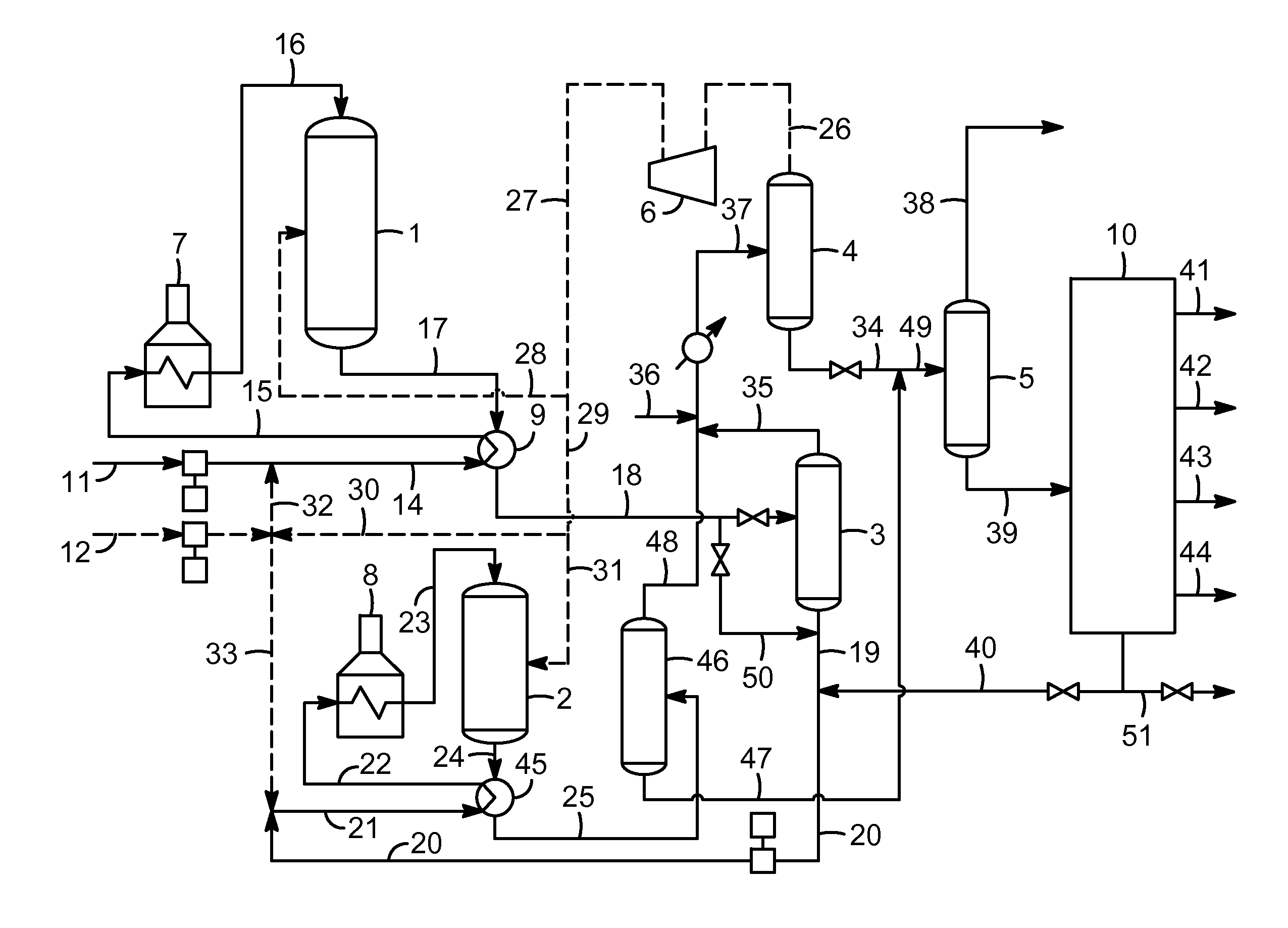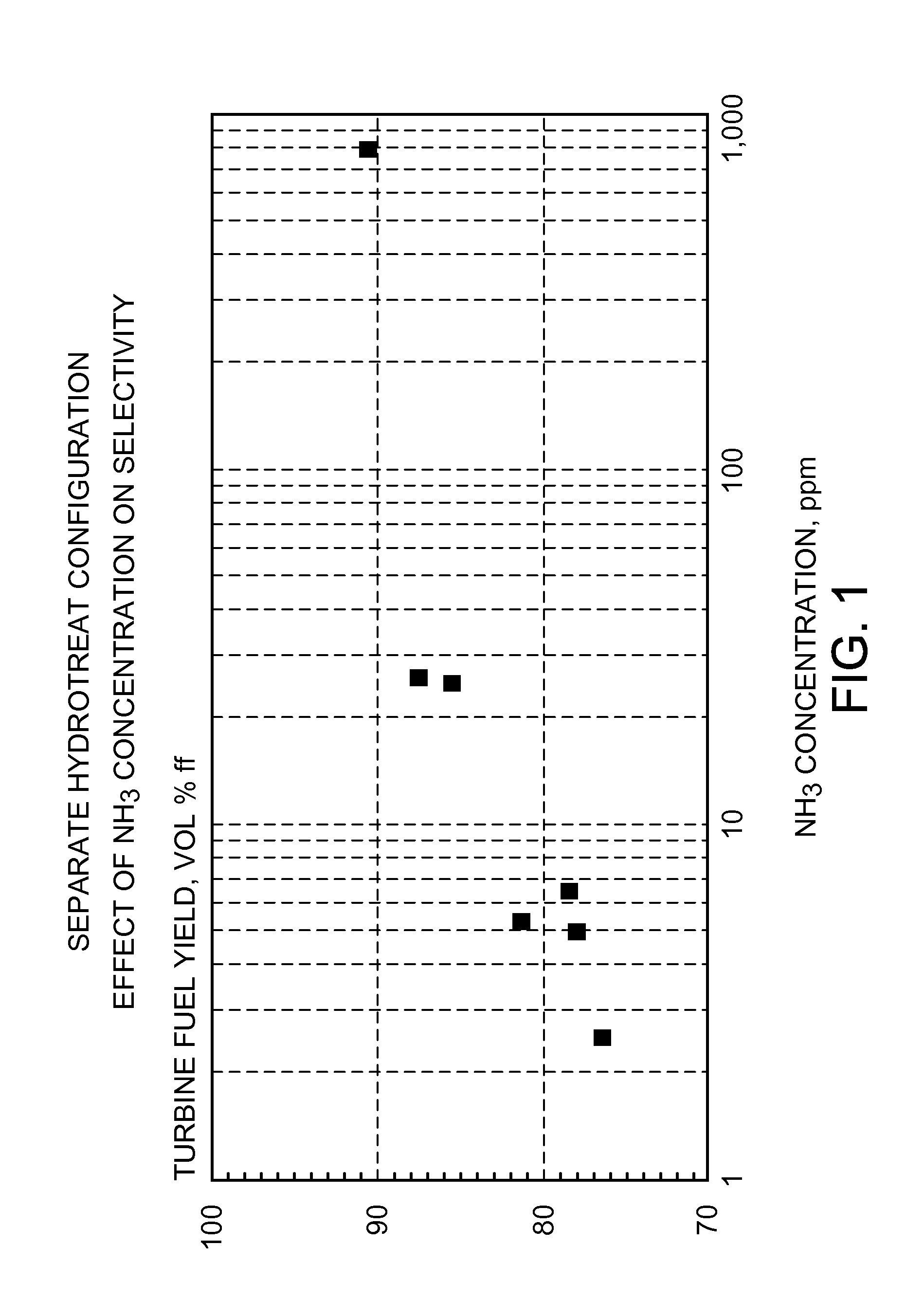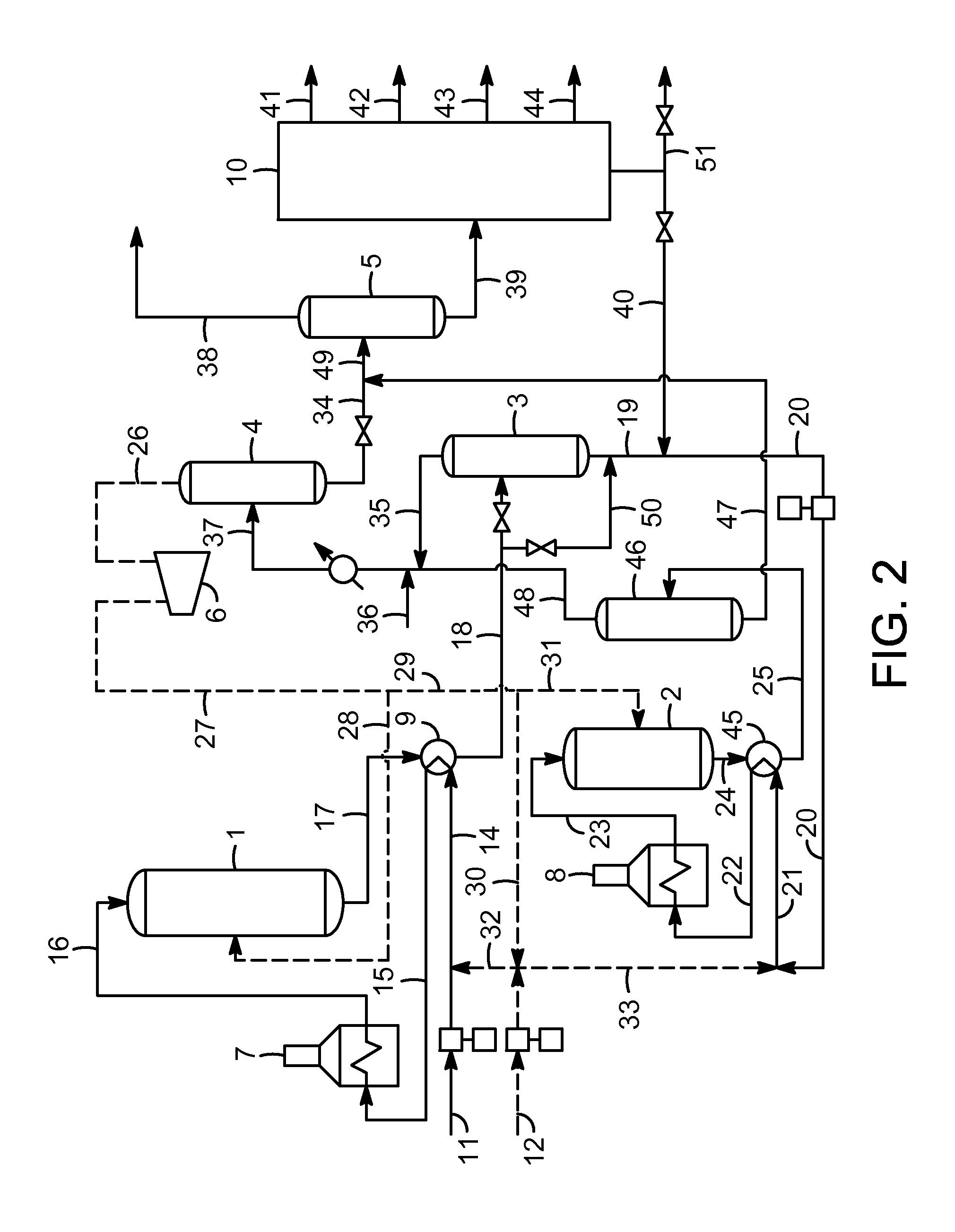Selective hydrocracking process for either naphtha or distillate production
a hydrocracking process and distillate technology, applied in process and machine control, hydrocarbon oil treatment products, instruments, etc., can solve the problems of increasing the temperature required to affect a given level of hydrocracking conversion in the hydrocracking zone, affecting the catalyst activity of the hydrocracking zone, and affecting the product or product constituent produced during the hydrocracking run
- Summary
- Abstract
- Description
- Claims
- Application Information
AI Technical Summary
Benefits of technology
Problems solved by technology
Method used
Image
Examples
example
[0043]A vacuum gas oil (“VGO”) range hydrocarbonaceous feed is first hydrotreated, and then introduced into a stripping zone where the effluent from the hydrotreating zone is stripped of ammonia and hydrogen sulfide, in a first example, and partially stripped in a second example. The remaining liquid stream is then sent to a hydrocracking zone over a low zeolite containing hydrocracking catalyst where the liquid stream is cracked into substantially a middle distillate stream. The effluent of the hydrocracking reactor is then sent to a fractionation zone for separation into various products by their boiling point ranges. Compounds boiling higher than the turbine range, and even typically higher than the middle distillate range, are recycled in part back to the hydrocracking zone. Turbine fuel is a subset of the middle distillate stream and is the lightest fraction of the middle distillate. The middle distillate can encompass the boiling range of both turbine fuel and diesel, therefor...
PUM
 Login to View More
Login to View More Abstract
Description
Claims
Application Information
 Login to View More
Login to View More - R&D
- Intellectual Property
- Life Sciences
- Materials
- Tech Scout
- Unparalleled Data Quality
- Higher Quality Content
- 60% Fewer Hallucinations
Browse by: Latest US Patents, China's latest patents, Technical Efficacy Thesaurus, Application Domain, Technology Topic, Popular Technical Reports.
© 2025 PatSnap. All rights reserved.Legal|Privacy policy|Modern Slavery Act Transparency Statement|Sitemap|About US| Contact US: help@patsnap.com



